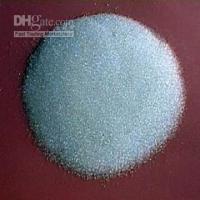Sandblaster, abrasive blasting,
bead blasting or shot blasting is a process of cleaning the dirt or rust and
other contaminants from any target surface by shooting abrasive materials with
extensive pressure.
Two types of material can be categorized
in sand blaster industry.
Read more about this on Know Sandblasting
· Mostly used sandblaster material
Materials that are usually sand
blasted by the companies are the items made from Glass, stone, metals, wood and
plastics steel, brass, aluminum, pewter, silver, etc. All above mentioned items
are sandblasted except diamond. It is because of its hard surface which is
difficult to sand blast as the sandblaster media used by the companies cannot
handle the pressure. Other Stones are sandblasted to create carvings on memorials
or monuments pillars. Sandblaster of a metal is done dislocate the rust and
sharp edges or as an adhesion of coatings and adhesives. Items made from Wood
and brick are sandblasted to remove remains of paint, oil and dirt and to
generate a neat surface which can be easily painted. Plastic materials can be
sandblasted for decorative purposes. In this case the work has to done with
much care since plastic is much delicate and needs to be handled carefully otherwise
it will wear away.
· Materials used as an abrasive in sandblaster.
These materials include silica sand,
aluminum oxide, silicon carbide,Garnet, Glass Beads, Walnut Shells,and Plastic
Pellets etc.
The process of sand blasting involves
mixing a hard abrasive or media with air under high pressure and then allowing material
to be gradually worn away by leading the
abrasive material directly onto the
surface of the material. The time taken by the abrasive stream depends upon the
amount of material to be sand blasted. The abrasive stream is held in one location
and the material is removed by pressure.Directing the nozzle part of the sand
blasting setup nearer to the surface reduces the area being blasted, and enhances
the chances of removal of sandblasted material. By locating the nozzle of the
equipment farther distance, the area of sandblaster increases and the chances
of removal of material minimizes. If the nozzle is directed nearer to the
targeted material, a hole can be abraded through the surface very quickly.
The cost regarding the abrasive
media or materials used to sandblast varies from material to material.
A customer will find Silica Sand as
an abrasive which is available at a cheaper rate as low as $0.05/lb.
Aluminum Oxide is also another good
option as it creates its impact 30-40times over Silica sand and has a static
charge. It offers a moderate cost at $1.00/lb. It fractures the material into
round shape.
Silicon Carbide is another option
which lasts 40-50 times over silica sand. Silicon Carbide when used as an abrasive
cost about $1.60/lb.
The advantage of using silicon
carbide over Aluminum oxide is that it
fractures the material faster than Aluminum Oxide, hoses and nozzles can be
applied quickly, has no static charge, and dismantles the object providing it a
sharp edge as compared to Aluminum oxide.






